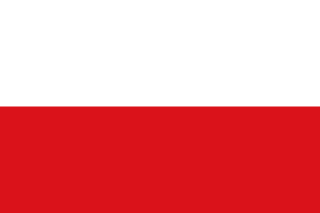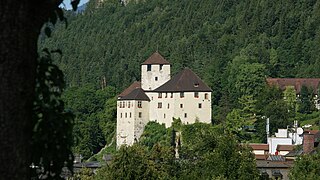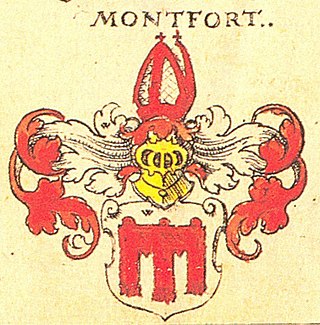
The House of Habsburg, also known as the House of Austria, is one of the most prominent and important dynasties in European history.
The count of Flanders was the ruler or sub-ruler of the county of Flanders, beginning in the 9th century. Later, the title would be held for a time, by the rulers of the Holy Roman Empire and Spain. During the French Revolution, in 1790, the county of Flanders was annexed to France and ceased to exist. In the 19th century, the title was appropriated by Belgium and granted twice to younger sons of Belgian kings. The most recent holder died in 1983.
Duke of Burgundy was a title used by the rulers of the Duchy of Burgundy, from its establishment in 843 to its annexation by France in 1477, and later by members of the House of Habsburg, including Holy Roman emperors and kings of Spain, who claimed Burgundy proper and ruled the Burgundian Netherlands.

The emperor of Austria was the ruler of the Austrian Empire and later the Austro-Hungarian Empire. The hereditary imperial title and office was proclaimed in 1804 by Francis II, Holy Roman Emperor, a member of the House of Habsburg-Lorraine, and continually held by him and his heirs until Charles I relinquished power in 1918.

Charolais is a historic region of France, named after the central town of Charolles, and located in today's Saône-et-Loire département, in Burgundy.

Rankweil is a town in the westernmost Austrian state of Vorarlberg, in the district Feldkirch. It is the second largest town in the district Feldkirch and the eighth largest town in Vorarlberg.

Albert III of Austria (9 September 1349 – 29 August 1395), known as Albert with the Braid (Pigtail) (German: Albrecht mit dem Zopf), a member of the House of Habsburg, was Duke of Austria from 1365 until his death.

Leopold III, known as the Just, a member of the House of Habsburg, was Duke of Austria from 1365. As head and progenitor of the Leopoldian line, he ruled over the Inner Austrian duchies of Carinthia, Styria and Carniola as well as the County of Tyrol and Further Austria from 1379 until his death.

Feldkirch is a town in the western Austrian state of Vorarlberg, bordering on Switzerland and Liechtenstein. It is the administrative centre of the Feldkirch district. After Dornbirn, it is the second most populous town in Vorarlberg. The westernmost point in Austria lies in Feldkirch on the river Rhine, at the tripoint between Austria, Switzerland, and Liechtenstein.
The Counts of Montfort were a German noble dynasty from Swabia. They belonged to high nobility of the Holy Roman Empire and enjoyed the privileged status of Imperial immediacy.

The (Princely) County of Tyrol was an estate of the Holy Roman Empire established about 1140. After 1253, it was ruled by the House of Gorizia and from 1363 by the House of Habsburg. In 1804, the County of Tyrol, unified with the secularised prince-bishoprics of Trent and Brixen, became a crown land of the Austrian Empire. From 1867, it was a Cisleithanian crown land of Austria-Hungary.

The County of Gorizia, from 1365 Princely County of Gorizia, was a State of the Holy Roman Empire. Originally mediate Vogts of the Patriarchs of Aquileia, the Counts of Gorizia (Meinhardiner) ruled over several fiefs in the area of Lienz and in the Friuli region of northeastern Italy with their residence at Gorizia (Görz).

The Counts of Gorizia, also known as the Meinhardiner, House of Meinhardin, were a comital, princely and ducal dynasty in the Holy Roman Empire. Named after Gorizia Castle in Gorizia, they were originally "advocates" (Vogts) in the Patriarchate of Aquileia who ruled the County of Gorizia (Görz) from the early 12th century until the year 1500. Staunch supporters of the Emperors against the papacy, they reached the height of their power in the aftermath of the battle of Marchfeld between the 1280s and 1310s, when they controlled most of contemporary Slovenia, western and south-western Austria and north-eastern Italy mostly as (princely) Counts of Gorizia and Tyrol, Landgraves of Savinja and Dukes of Carinthia and Carniola. After 1335, they began a steady decline until their territories shrunk back to the original County of Gorizia by the mid 1370s. Their remaining lands were inherited by the Habsburg ruler Maximilian I.

Schattenburg is a castle, museum and restaurant in Feldkirch, Vorarlberg (Austria). Schattenburg is 480 metres (1,570 ft) above sea level..

The Count of Hainaut was the ruler of the county of Hainaut, a historical region in the Low Countries. In English-language historical sources, the title is often given the older spelling Hainault.

The county of Bregenz is recorded as part of the Holy Roman Empire between 1043 and 1160. It was in possession of the Udalriching family, who took the titles of counts of Bregenz.

The County of Kyburg probably came into existence in the 11th century and is first mentioned in 1027. After 1053 it was a possession of the counts of Dillingen. It was greatly expanded with the extinction of the House of Lenzburg in 1173.

The grand title of the emperor of Austria was the official list of the crowns, titles, and dignities which the emperors of Austria carried from the foundation of the empire in 1804 until the end of the monarchy in 1918.

Rudolf III von Montfort was bishop of Chur (1322–1325) and Konstanz (1322–1334). He was born into the young family of Montfort-Feldkirch of the Swabian noble family of Montfort.
















